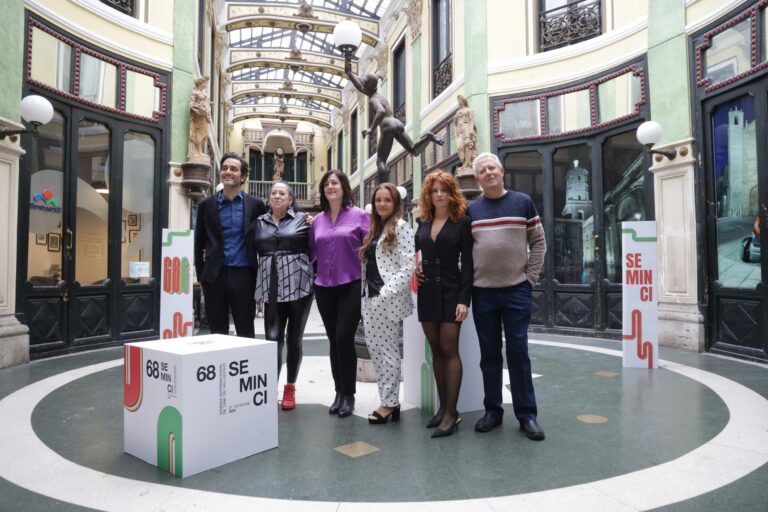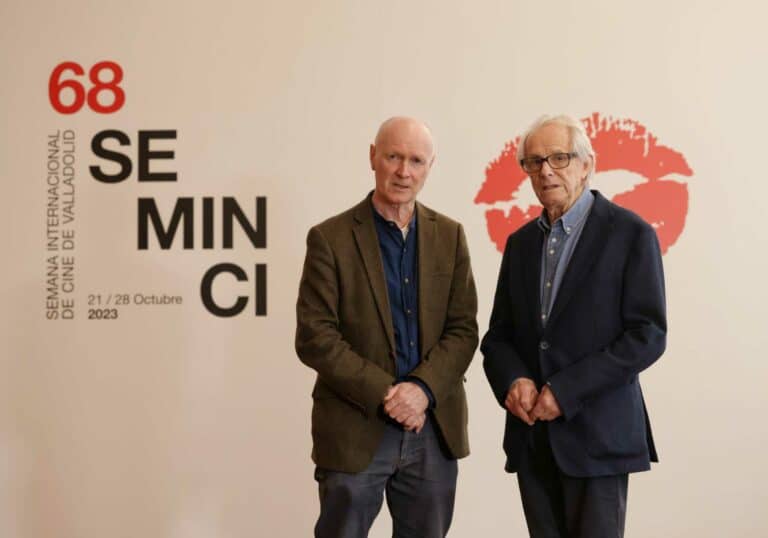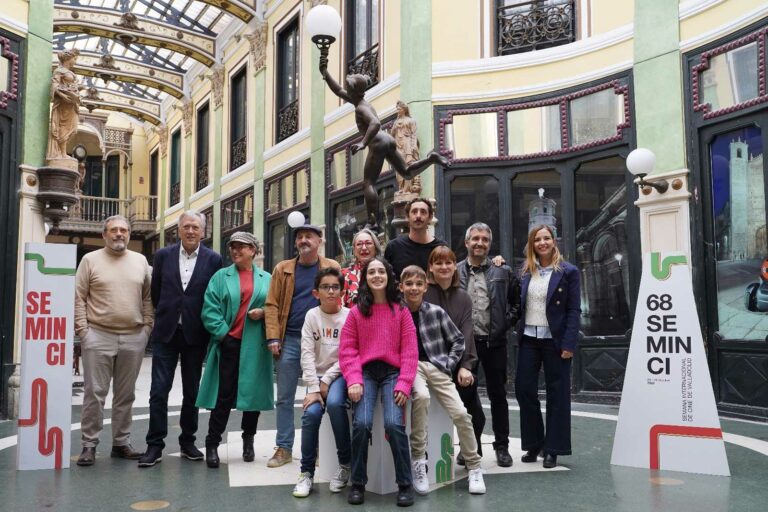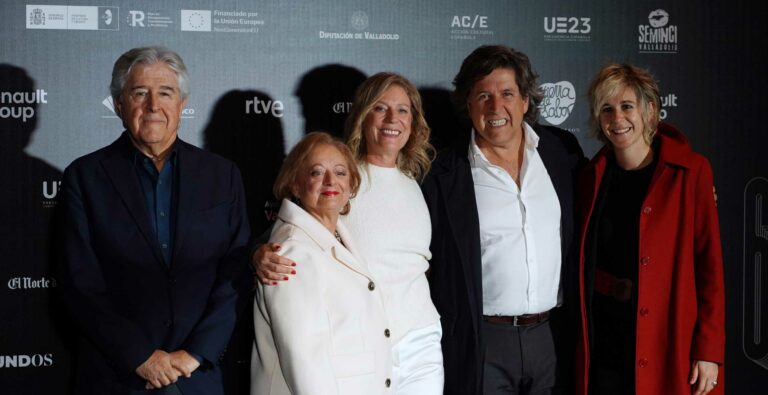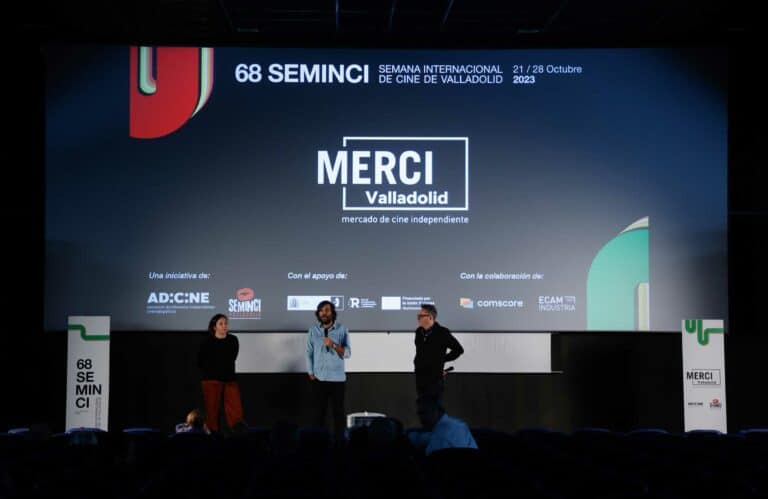“I’ve worked as a social educator in foster homes, and I wanted to talk about what happened there, to talk about those experiences. I also wanted to talk about sexual abuse, which is a subject that has always been there, even though it is more talked about nowadays. I’ve heard many testimonies of women who have suffered sexual abuse and I wanted that to be highlighted in the film.” With these words, Swiss director and writer Fred Baillif summarised today Thursday, October 28th, 2021, in the Hall of mirrors of Calderón Theatre, the motivations that led him to shoot a film like La Mif [The Fam], in which he delves into the daily life of a temporary youth home for teenagers.
Accompanied by two of the film’s non-professional actresses, Anaïs Uldry and Charlie Areddy, Baillif spoke about the origins of this project and the difficulties he came across in making this courageous film, in which he questions the system of shelters for abused women. “I went to visit one of the foster homes, I knew the director, Claudia Grob [who plays Lora in the film, the director of the centre], I talked to her about the project and she liked it. We worked a lot with the girls, for two years, doing improvisation workshops… and the result is what you see.”
However, two weeks before the end of filming, the centre’s director changed, and the home closed its doors to the project. “Everything was quite difficult,” said Baillif, “but since I have total freedom, when there is a problem, solutions are sought and, in the end, the difficulty is transformed into something positive. That great difficulty came two weeks before we finished shooting, when a new director came in and wanted to protect the girls from this project. As most of the girls were of age, we could find another home to finish the shoot. But two of the girls who were there from the beginning, being still minors, had to stop being in the film. All this gave me more desire and motivation to say what I wanted to say.”
And what exactly did he want to say? For Bailiff, the big question is whether these foster homes are really “homes” for children. “As a social worker, this is a fundamental question. In foster care, the focus is on the protection of the young people, and the emotional side is put on the back burner. There is a big gap, and that doesn’t help much. That’s the question I ask myself, that’s why the word “protection” and the idea of protection appear so many times in the film. For me this is a failure of the system, concentrating on protection and leaving aside such important aspects for minors as emotion, affection…”
The film is shot with a handheld camera, with a very open script. This is what the director says: “I’m not an aesthetician, but a filmmaker. For me the most important thing is to show the reality of the protagonists, and I wanted to be very close to their faces. I have used this method in other films (this is the third one), because it gives me flexibility, I can adapt to what happens or what may happen, to the circumstances, and thus give it more realism. As the protagonists are not professional actresses, we did only one very long take, or maybe two. That’s my way of working, looking for naturalness.”
About the script, he commented: “It’s not really a dialogue script, but to lay the groundwork for the shooting. I didn’t dare write a dialogue about something so real. I come from the documentary world, and what I want is to capture real things. That’s why the dialogues are constructed by the stars, based on their own language. Who could say it better than them?”
For Anaïs Uldry, one of the non-professional actresses starring in this ensemble film, the shooting was “an amazing experience.” “I knew my character’s story, but not my colleagues’ stories. It was easy to follow the director’s instructions. He would meet us five minutes before the scene and explain what was going to happen, and we had to improvise, it was very exciting. I loved making this film, I’d like to continue working as an actress, although I’m not sure what I’m going to do.”
Charlie Areddy, daughter of a camera operator on the film crew, also described the experience as “incredible”, although she was not originally going to be one of the main characters: “I was going to be an extra, but they saw me play a scene and they took me for the film. I was not in the foster home, at that time I was a student of Fine Arts, and it has been a really nice experience.”
La Mif will be screened today Thursday 28th at Carrión and Calderón Theatres at 4pm, and again tomorrow Friday at Broadway Cinemas at 7.30pm.



